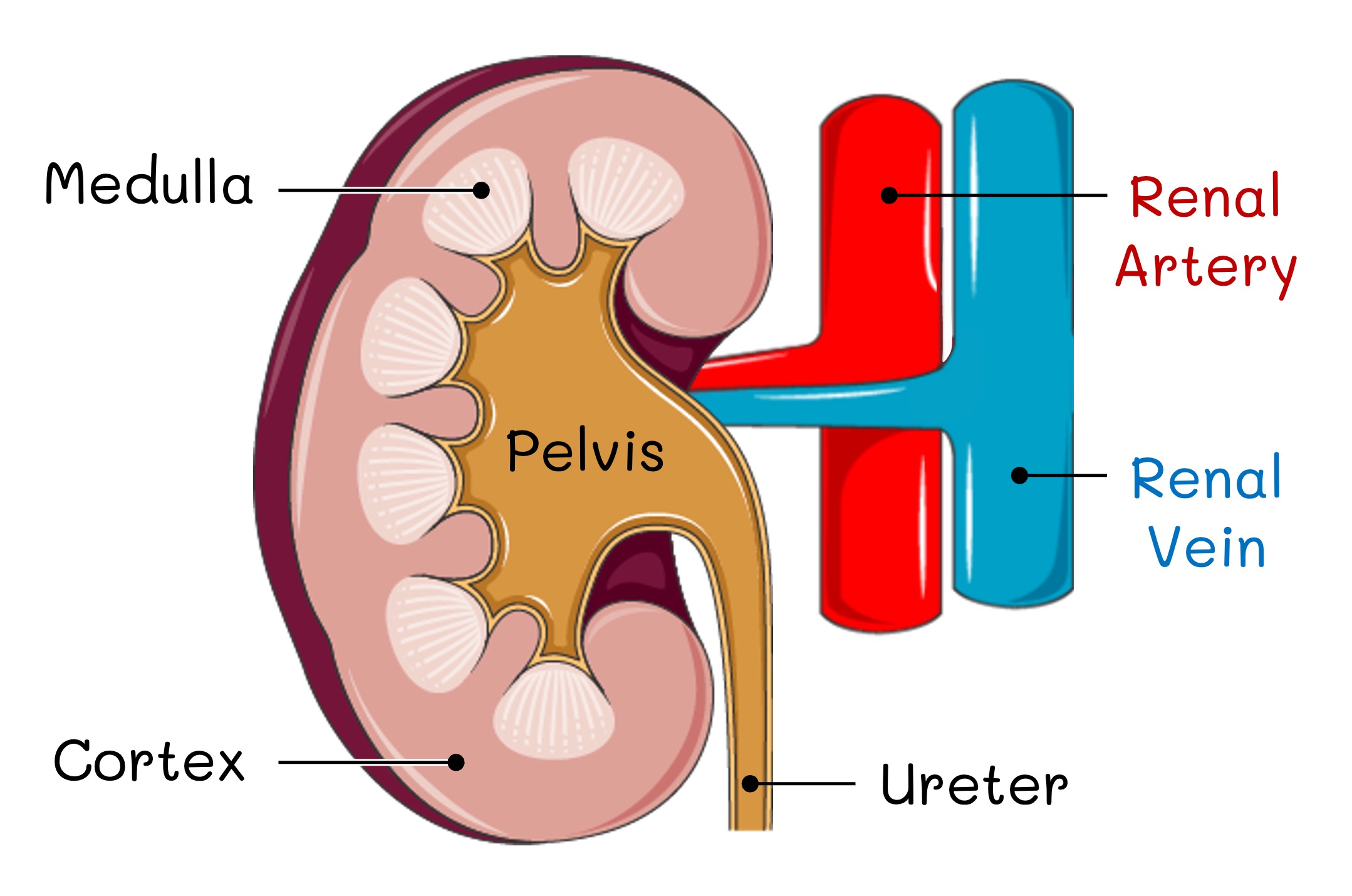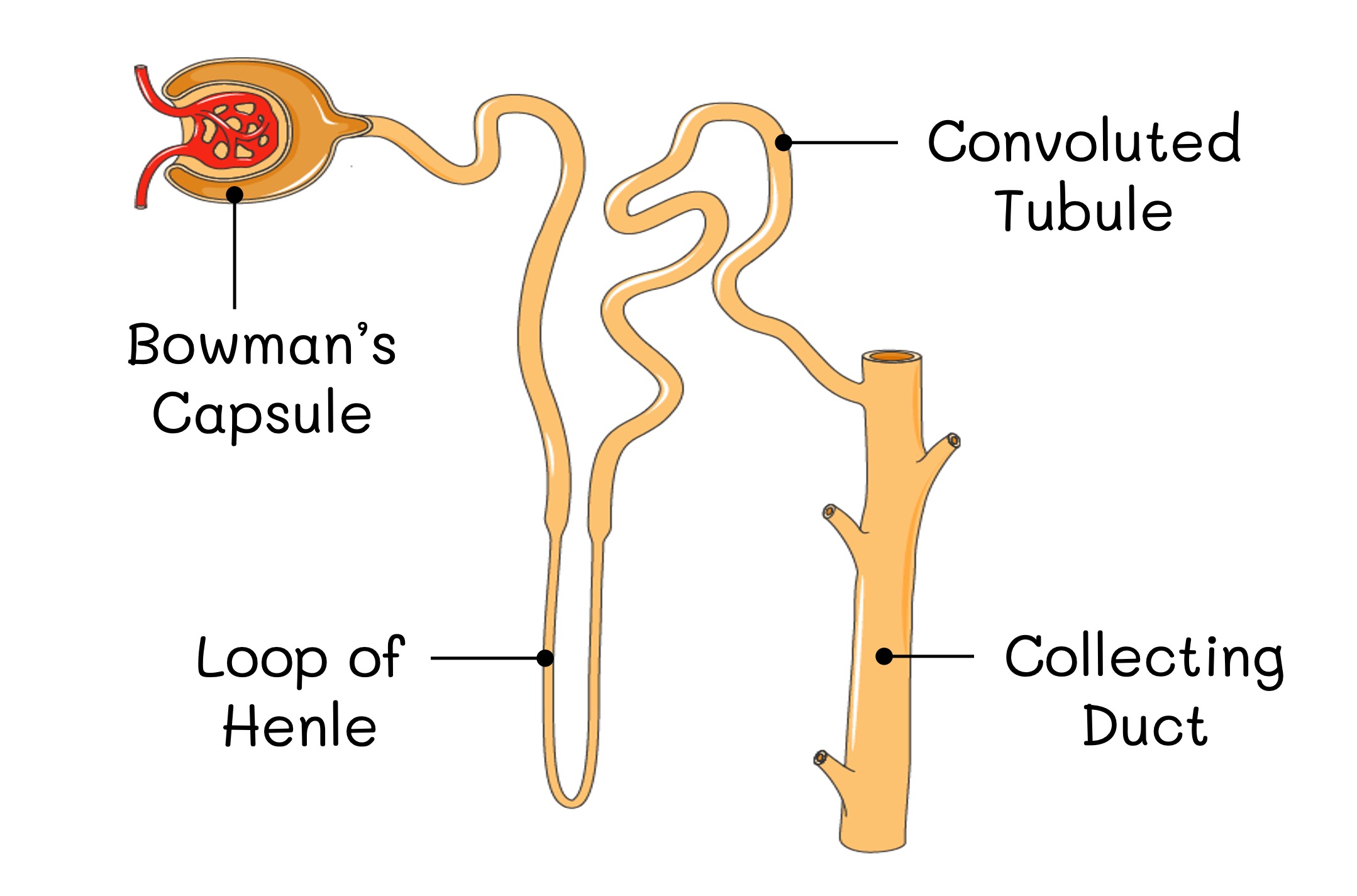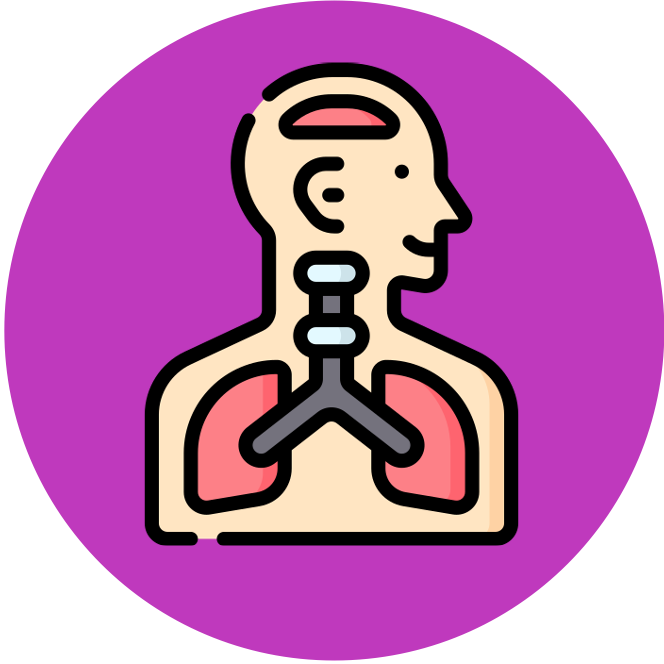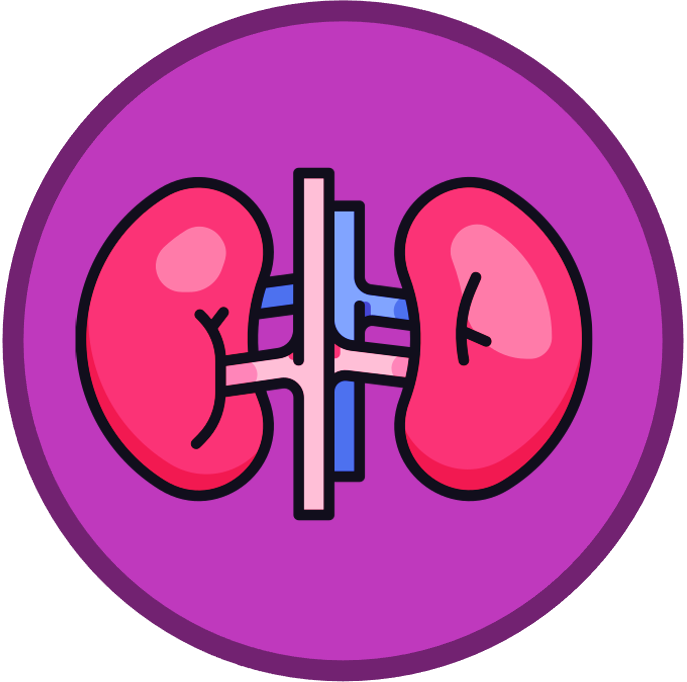

Kidneys
The kidneys serve as a filtration system for the bloodstream and serves two key functions:
-
Excretion – Metabolic wastes are removed from the body (nitrogenous compounds such as urea can be toxic in high concentrations)
-
Osmoregulation – Internal water levels are regulated to ensure a suitable osmotic concentration within tissues and cells (measured in osmoles per litre)
Kidneys
The kidneys are a pair of bean-shaped organs located below the ribs on the posterior side of the body
-
Blood enters the kidneys via the renal artery and exits the kidneys via the renal vein
-
Blood is filtered within the kidneys by specialised structures called nephrons which produce urine
-
The urine is transported from the kidneys via the ureter, where it is stored by the bladder prior to excretion

Nephrons
The nephron is the functional unit of the kidney, with each nephron being comprised of the following components:
-
Bowman’s capsule – first part of the nephron where blood is initially filtered (to form filtrate)
-
Proximal convoluted tubule – folded structure connected to the Bowman’s capsule where selective reabsorption occurs
-
Loop of Henle – a selectively permeable loop connected to the tubule that establishes a salt gradient
-
Distal convoluted tubule – a folded structure connected to the loop of Henle where further selective reabsorption occurs
The Bowman’s capsule and convoluted tubules are located within the cortex of the kidney, while the Loop of Henle descends into the medulla
-
Each nephron connects to a collecting duct (via the distal convoluted tubule), which feed into the renal pelvis
Excretory System

Kidney





